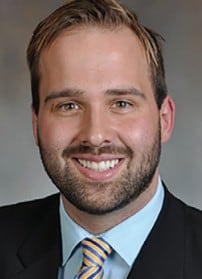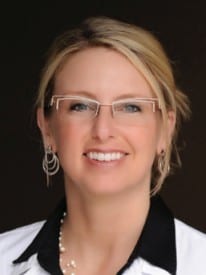Read these experienced dentists’ best practices for developing and maintaining relationships with referring physicians.
It is vitally important that dentists develop relationships with their physician colleagues so they can become part of the multidisciplinary team needed to adequately manage sleep disordered breathing patients.
In each issue of Dental Sleep Practice, we ask prolific Dental Sleep practitioners from across the country a set of three questions. In this issue, we asked the following questions about best practices for developing and maintaining relationships with referring physicians. These are the responses “In Your Own Words.”
- How did you develop a relationship with your most prolific referring physician?
- What do you do to maintain that relationship?
- What words of wisdom would you share with someone trying to do the same?
 Mayoor Patel, DDS, MS
Mayoor Patel, DDS, MS
- I began by sending them patients for diagnosis and management. After several of my patients had gone through their practice, I approached the physician to have a face-to-face discussion.While meeting with the physician, we were able to discuss those mutual patients that we had and the care they were receiving. From that point, I introduced myself, and the services I offer. This led to a mutual, bi-directional working relationship that allows us to successfully collaborate with each other to care for our patients.
- This is a very important part of the collaboration process. We make sure that when the referral comes in, we contact the patient in a timely manner. We want to ensure that the patient can be seen for a consultation as quickly as possible to improve outcomes.Once a consultation and discussion for treatment are provided, we fax a letter to the referring physician to keep them in the loop with their patient’s care. We continue to provide this type of knowledge and care to all referral patients to maintain an ongoing, successful, and professional relationship between offices. This helps us ensure the best possible outcomes for our patients.
- Be patient with the process. You don’t develop these relationships overnight or at the drop of a hat. It takes time to mature a working relationship, as it does in most areas of our lives. Remember to also keep the physician in the loop as to what care the patient is receiving and whether their patient does or does not consider the treatment plan you suggest.Additionally, with every follow up visit you do with their patient make sure to send a follow-up note faxed to their office. And lastly, be available to answer any of the questions that they might have along the way. Together you can create a mutually beneficial working relationship.
 Steve Carstensen, DDS
Steve Carstensen, DDS
- I found out what problems the doctor was having and set out to solve them. I listened to their concerns and addressed them. I didn’t just do what I was told, but I was clear who is in charge.
- I make sure they hear from me about every patient – and that includes the ones I discover have abandoned their oral appliance and need other options
- Pankey taught us to ‘Know our Patient’ – you can carry that on to knowing who you want to do business with, how they approach their work, and see how you can fit in and provide service to them and their patients that no other dentist is making the effort to do. If you can meet the ARNP and connect your admin with theirs, all’s the better. This effort is way more than sending a letter or dropping off cards at the front desk.
 Kent Smith, DDS
Kent Smith, DDS
- I wish I could say I had one most prolific referring physician, but many of my sources have about the same level of referral frequency. Great patient feedback to the physician after being in our office has worked wonders. This is accomplished by being in network, minimizing out of pocket expense for the patient, and providing various appliances for specific needs.
- I communicate frequently with faxes and letters. They receive a fax when the patient they have referred has scheduled, then they receive letters after they have begun treatment and again when the patient is ready to return for a follow
up study. - Just be patient. You can’t win an MD over in a day. Then treat patients the way you would want to be treated. Your reviews will show this, so one goal could be to get as many reviews as possible. You can learn much from these online patient
 Justin Elikofer, DDS
Justin Elikofer, DDS
- Lunch and Learns and follow through; ask questions. You are not there to present on dental sleep therapy or oral appliance therapy. Focus on the interests of the office. No one gets a second date talking about themselves the whole time.
- Send a ton of letters. It makes you appear more confident, knowledgeable, and communicative. Don’t forget this is a life-threatening disease process and the physician actually cares what has been going on over the past 8 weeks of appliance titration. Keep them informed.
- Why do you refer to your endodontist or OMFS? It’s not because they called and asked or had a lunch and learn. It’s because they make your life easier, they do good work, and make you look better. Focus on discovering what that means to each physician and exceed their expectations. This takes work and emotional intelligence, but it isn’t rocket science. You can do this.
 Damian Blum, DMD
Damian Blum, DMD
- Several years ago, I received a patient referral from a doctor who was part of a pulmonology group at a local hospital. The patient she referred had an AHI of 145.6 and other associated issues. I asked why she referred this patient to me. She said that she looked me up online and read my reviews. After examining the patient, evaluating her history and measuring the desired therapeutic position, the appliance was made and delivered. Her subjective symptoms of snoring, headaches, nocturnal urination, and excessive daytime sleepiness were significantly diminished, and some were eradicated. Her follow up in-lab PSG with her oral appliance and no titration yielded an AHI of 19 with significant oximetry improvement also.
After that case I began to receive multiple referrals from various MDs in that group. We discussed cases together in writing and in direct conversations. I also spent some late evenings and nights with their technicians at their sleep labs and helped with oral appliance titrations. Eventually I was assigned to spend one day with a particular sleep doc who was also a neurologist boarded in sleep. This last doctor became my most frequent referrer. - To help maintain the relationship, I also refer to her and her team of doctors who are really good at what they do. We also discuss new technology, new procedures, new research and articles related to our professional relationship as well as other associated research. However, we do not discuss finances associated with our relationships.
- My advice is to do what I did. When I asked physicians about what made them refer to me and others, a few things stood out. Initially they will refer based on expertise and ability to get desirable results. Whether they continue to refer comes down to bedside manner, quality of service, patient satisfaction, and geographic proximity.
 Erin Elliott, DDS
Erin Elliott, DDS
- Spending time and befriending the head sleep tech. Then the sleep doc via email and golf. He was always so busy. We worked together for two years before we actually met in person and then we hit the golf course.
- Ask questions, provide new research and products from the dental side, collaborate on difficult patients.
- Demonstrate a genuine motivation to help patients, bill medical insurance including Medicare, and have patients go back and report success and gratitude for referring them to us.
Relationships with referring physicians is also important in home sleep apnea testing. Find out more in this article by Jayme Matchinski, Esq. here: https://dentalsleeppractice.com/legal-ledger/home-sleep-apnea-testing-and-dental-sleep-medicine/

